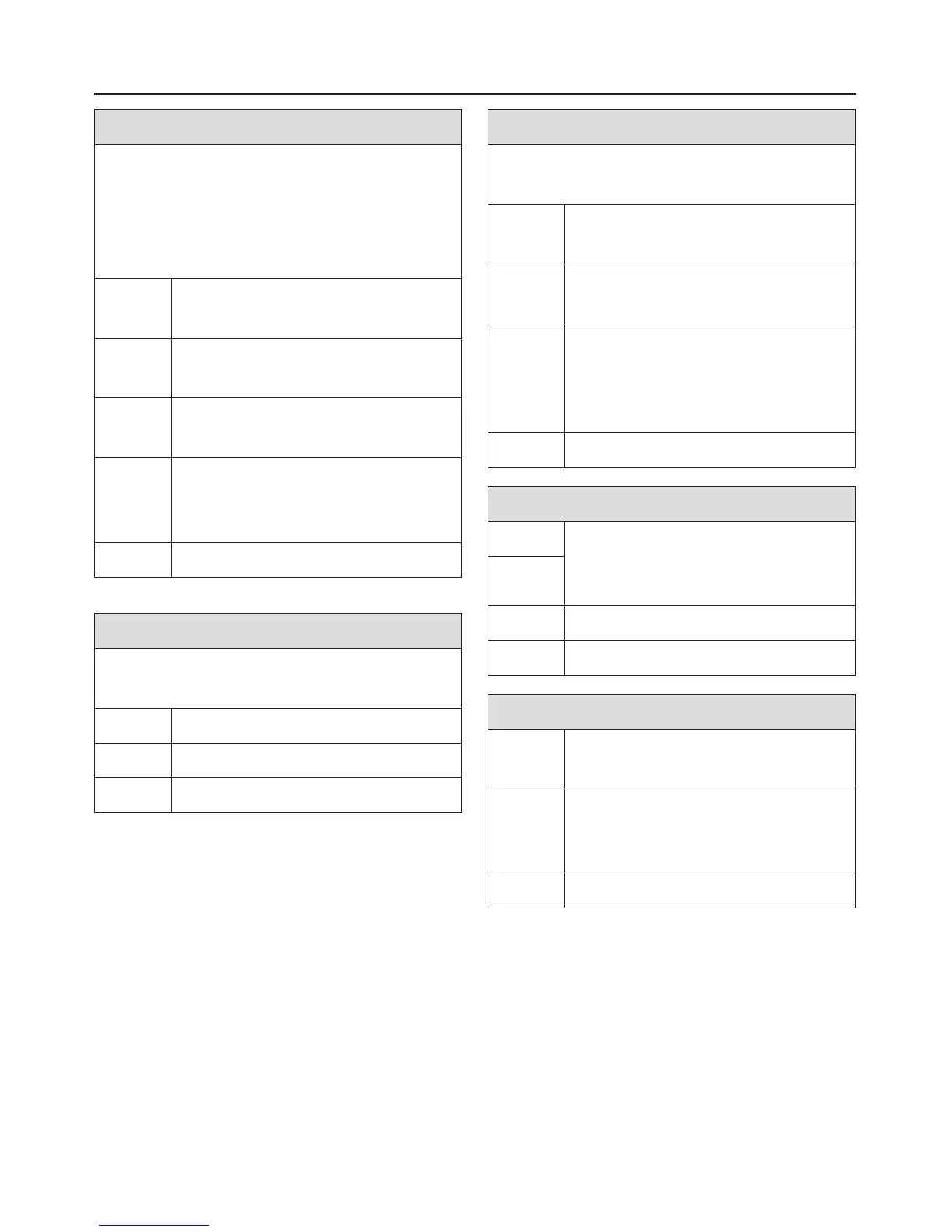
 Loading...
Loading...
Do you have a question about the Miele W 3748 and is the answer not in the manual?
| Loading type | Front loading |
|---|---|
| Capacity | 8 kg |
| Energy Efficiency | A+++ |
| Spin Speed | 1400 RPM |
| Noise Level (Washing) | 52 dB |
| Noise Level (Spinning) | 74 dB |
| Water Consumption | 49 L |
| Programs | delicates, quick wash |
| Dimensions | 850 mm |
Instructions for safely disposing of packaging materials.
Guidance on the environmentally sound disposal of old washing machines.
Defines the intended use of the washing machine and prohibited applications.
Precautions to ensure children's safety around the washing machine.
Ensures electrical and mechanical safety during installation and use.
Guidelines for proper and safe operation of the washing machine.
Information on approved accessory parts and their impact on warranty.
Overview and explanation of the washing machine's control panel.
Explanation of how programme duration is calculated and displayed.
How to tailor washing programs to individual requirements.
Instructions for selecting the display language.
Crucial step to remove transit bars before first use to prevent damage.
Guidance for the initial test run of the washing machine.
Tips for optimizing energy and water usage during washing.
Recommendations for detergent usage and dosage.
Guidance on selecting appropriate extra wash options for different soiling levels.
Advice on spin speed selection for efficient tumble drying.
A quick guide to the washing sequence.
Instructions on sorting laundry by colour, care label, and type.
Steps to power on the washing machine.
Guidance on loading laundry correctly into the drum.
How to choose and set a wash programme.
Instructions for adjusting wash temperature and spin speed.
How to select additional wash functions like Water plus.
Correct method for adding detergent to the dispenser.
How to initiate the selected wash programme.
Steps for unloading the machine after the wash cycle.
Details on available final spin speeds for different programmes.
Explanation of interim spins and their relation to final spin speed.
How to stop the machine after the final rinse to prevent creasing.
How to skip all spin cycles and proceed to the anti-crease phase.
Details on special programme functions like extra rinses.
How the anti-crease function prevents laundry creasing after washing.
Explanation of washing symbols on garment care labels.
Explanation of drying symbols on garment care labels.
Explanation of ironing symbols on garment care labels.
Explanation of professional cleaning symbols.
Explanation of bleaching symbols on garment care labels.
How to cancel a running washing programme.
Steps to pause and resume a washing programme.
How to modify programme settings after it has started.
Adjusting the wash temperature after programme start.
Adjusting the spin speed after programme start.
Selecting or deselecting extra options after programme start.
Procedure for adding or removing items during a cycle.
How to activate and deactivate the child safety lock.
Step-by-step guide to engaging the safety lock feature.
Step-by-step guide to disengaging the safety lock feature.
Information on suitable detergents for automatic washing machines.
Factors influencing the correct detergent dosage.
Use and recommendation of water softeners.
Dispensing order for multiple detergent components.
Usage of fabric conditioners and starch for laundry care.
How the machine automatically dispenses fabric conditioner.
Usage guidelines and warnings for colour run and dye removers.
Cleaning instructions for the machine's exterior.
Recommendations for deep cleaning the machine to prevent deposits.
Procedure for cleaning the detergent dispenser drawer.
How to clean the interior of the detergent dispenser housing.
When and how to descale the washing machine.
Instructions for cleaning the water inlet filters.
Specific steps for cleaning the inlet hose filter.
Specific steps for cleaning the filter within the water inlet valve.
Troubleshooting steps when the programme fails to initiate.
Explanation of fault codes and error messages.
Solutions for common operational issues like shaking or poor spinning.
Troubleshooting tips for issues like grey laundry or stale smells.
Reasons why the drum door remains locked and how to resolve.
Procedure for opening the door during drainage issues or power cuts.
Troubleshooting steps for a blocked drain outlet.
Manual procedure to open the drum door in emergencies.
Information on the PC interface for service technicians.
Reference to the appliance guarantee card.
Information on purchasing optional accessories for the machine.
Diagram and labels for the front components of the washing machine.
Diagram and labels for the rear components of the washing machine.
Recommendations for the ideal installation surface for the machine.
Guidance on moving and positioning the washing machine.
Detailed steps for removing the transit bars for first use.
Instructions for fitting protective covers after transit bar removal.
How to secure transit bars for future transport.
Procedure for re-installing transit bars for moving the machine.
Ensuring the machine is level for safe and proper operation.
How to adjust the machine's feet for levelling.
Guidelines for installing the machine under a worktop.
Information on stacking a tumble dryer on the washing machine.
Important notes regarding stacking kit dimensions and lid replacement.
Ensuring the lid is correctly fitted after removal for stacking.
Components and function of the Miele water protection system.
Specifications for the inlet hose.
Description of the electronic unit and sump system.
Information regarding the drain hose and its protection.
How the machine prevents overfilling with water.
Requirements for connecting the machine to the mains water supply.
Availability of longer hoses as optional extras.
Care instructions for the water supply hose.
Methods for connecting the drain hose to various outlets.
Specific instructions for connecting the drain hose to a sink.
Safety requirements for electrical connection in the UK.
Safety information regarding BS 1363 plugs and fuse replacement.
Specific notes for test institutes regarding programme selection.
Steps to enter the programmable functions menu.
How to choose a specific programmable function.
How to change settings within a programmable function.
How to exit the programmable functions menu.
Setting the display language and understanding language selection guides.
Explanation of the Water plus function and its options.
Using the Gentle action setting for delicate fabrics.
How Suds cooling prevents damage to drainage pipes.
Instructions for activating, using, and deactivating the machine's code lock.
Option to display temperature in Celsius or Fahrenheit.
Settings for the buzzer volume and activation.
Enabling or disabling audible feedback for button presses.
Adjusting the brightness of the display.
Adjusting the contrast of the display.
Configuring the display's behaviour in standby mode.
How the machine stores and recalls the last used settings.
Activating or deactivating the anti-crease function.